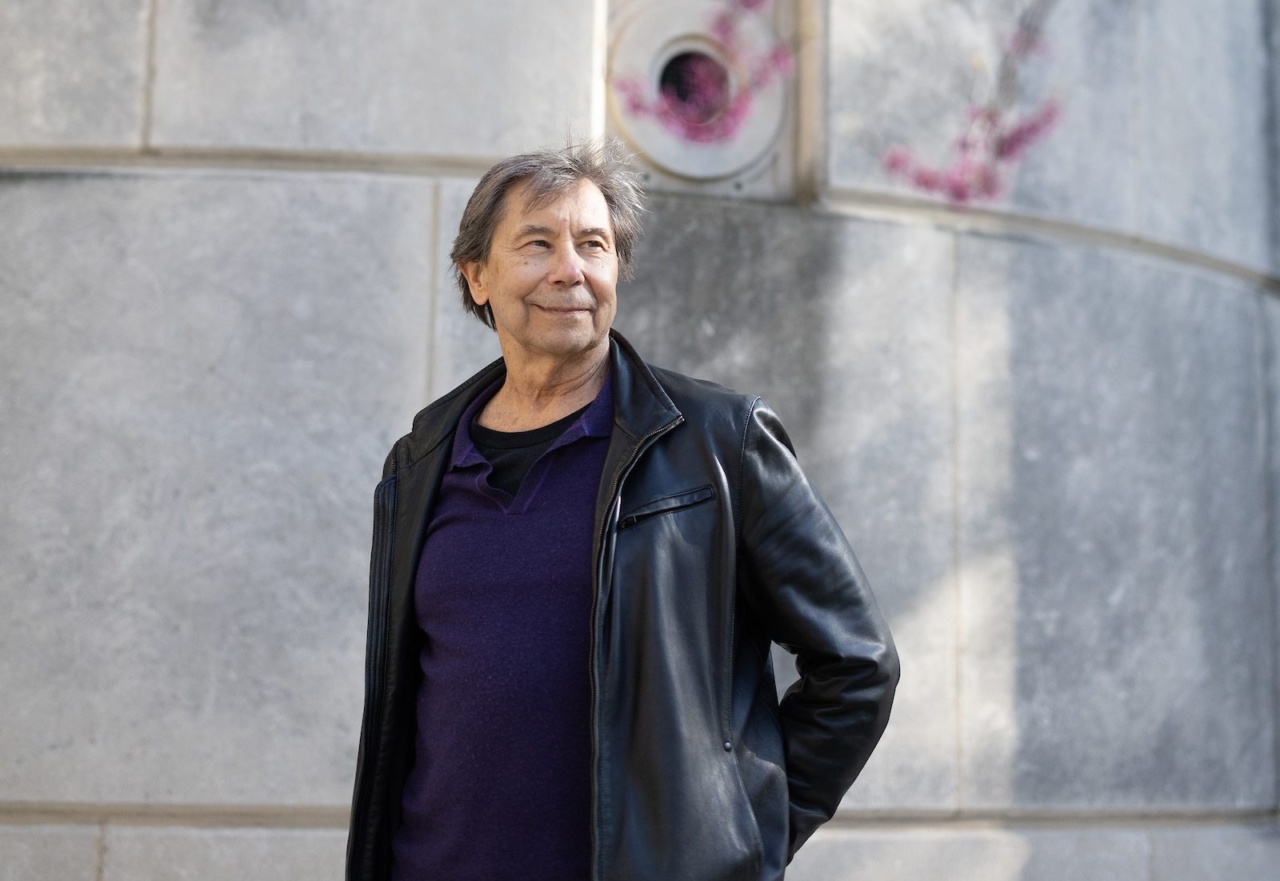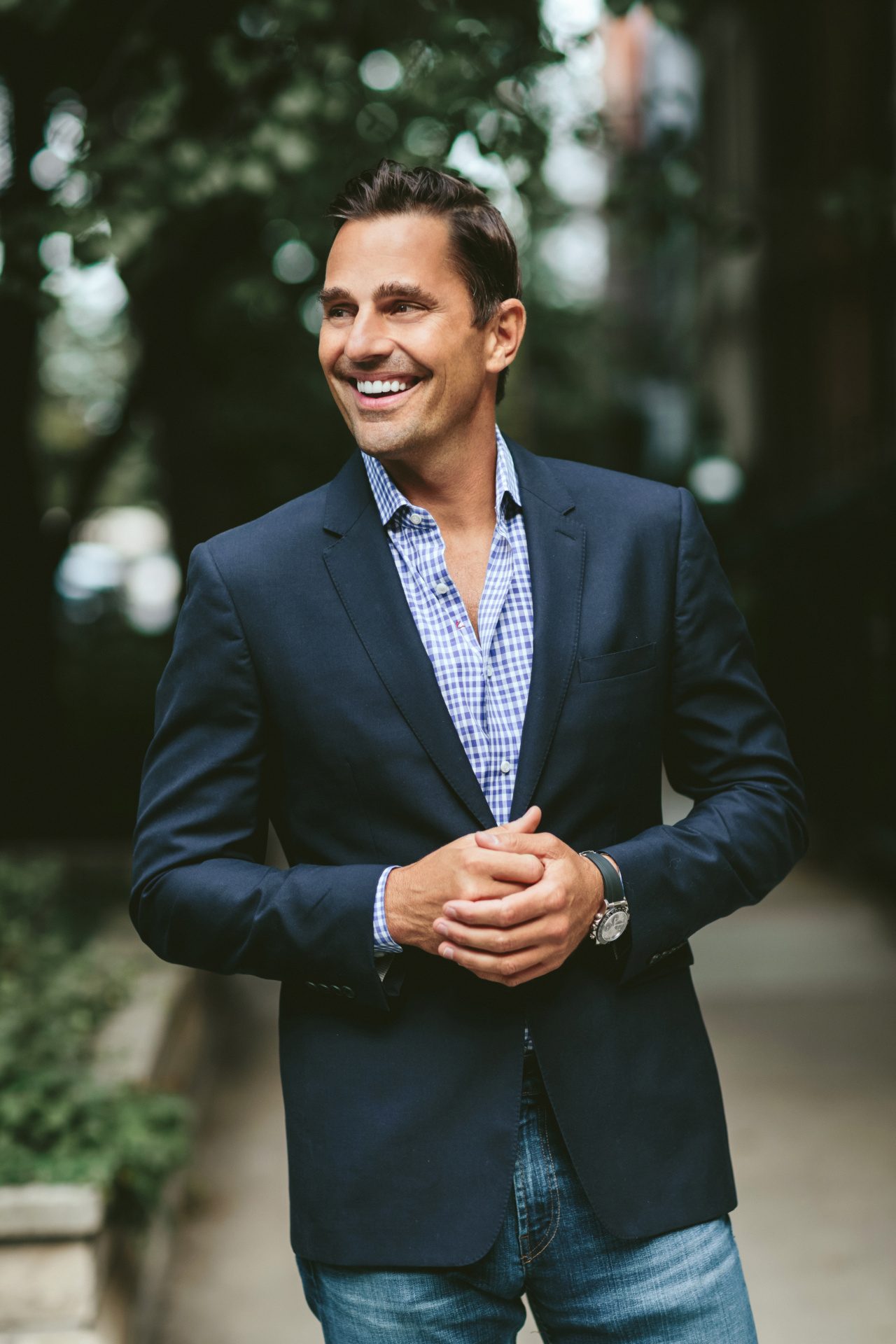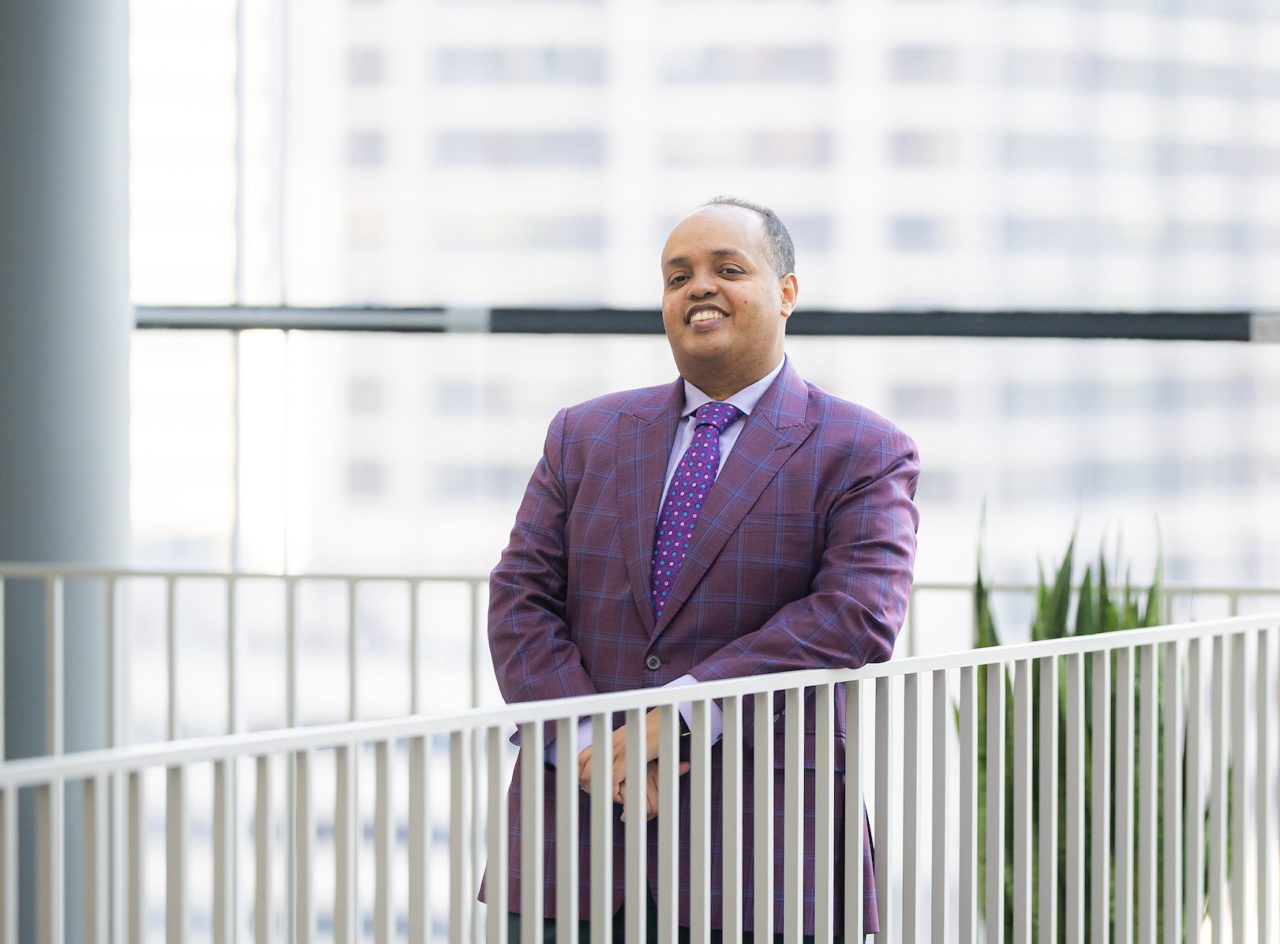Professors from diverse backgrounds offer fresh perspectives
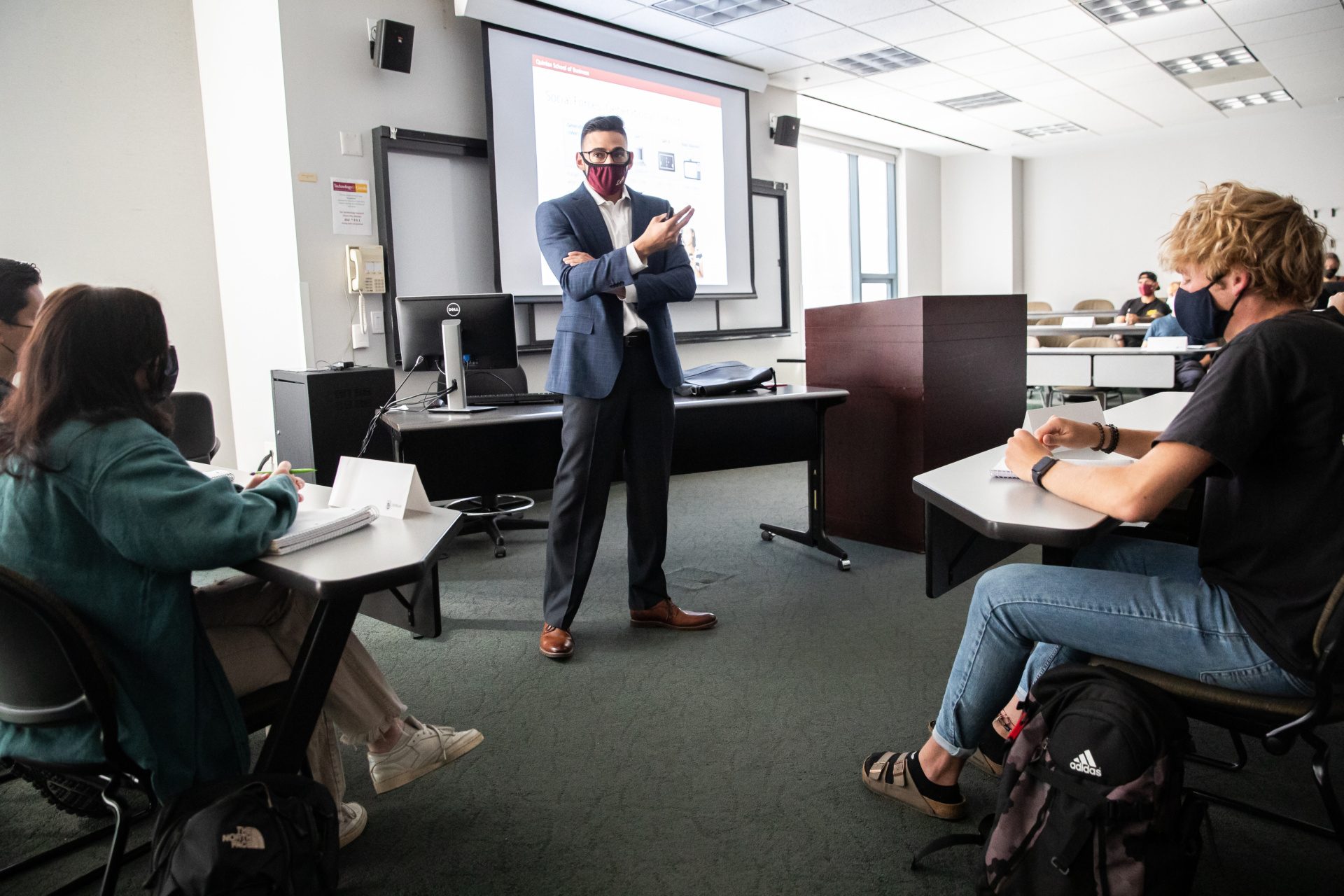
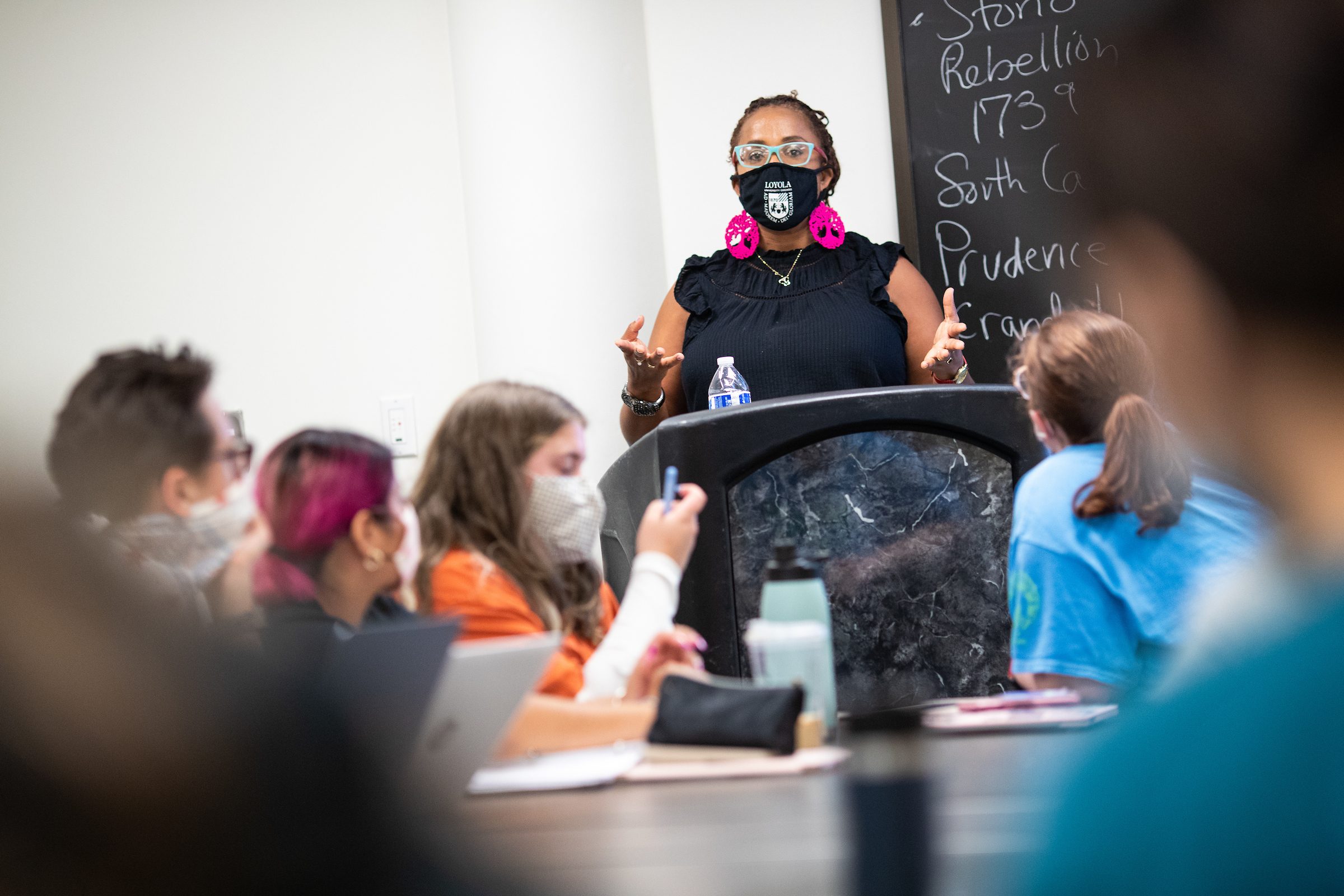
Tikia Hamilton
On May 17, 1954, the U.S. Supreme Court reshaped the nation when it issued its unanimous decision in Brown v. Board of Education that “separate educational facilities are inherently unequal.” Segregation in classrooms, in other words, was patently unconstitutional. That same Monday, the court also took up Bolling v. Sharpe, a case centering around Washington, DC’s unique status as a federal city. Did the Fourteenth Amendment’s equal-protection clause—used to justify Brown—apply in a city that lacks statehood? Not necessarily, the justices determined. Instead, it was the Fifth Amendment’s guarantee of “liberty” that ultimately prompted capital desegregation. A weird wrinkle on an otherwise historic day.
Washington, DC’s experience of school segregation was always distinct. For many African Americans, the district stood as a model system in an immoral era. Many teachers had advanced degrees; the most educated had been shut out of white institutions. So long as the resources were equal, some Black parents and educators preferred—or at least were content with—running their own schools. Compared to 17 states in the South that explicitly practiced segregation, DC represented what civil rights lawyer Charles Hamilton Houston called “the closest approximation to separate but equal.”
These paradoxes animate the work of Tikia Hamilton, an assistant professor of history at Loyola University Chicago. She’s in the process of revising her first book, Making a Model System: The Battle for Educational Equality in the Nation’s Capital before Brown. Even under the most precarious circumstance, Hamilton found, Black Washingtonians “were determined to push educational excellence.” And their unusual experience in the so-called cradle of democracy, she argues, “leaves open questions about what’s possible today. Because as we know, desegregation has not been a panacea. And the degree to which schools have desegregated has not been that impressive.”
Hamilton—who earned her doctorate from Princeton University in 2015—spent six years living in Washington before she relocated to her native Chicago. The bulk of her research has focused on Black women. She’s always found the process of writing history to be transportive.
“It’s just really intriguing to put myself in their shoes,” she says.
The DC neighborhood where she lived, for example, was once hostile to people who looked like her. She would leave the archive and walk down those same streets, reflecting on the hostility people faced and drawing inspiration from the grace they were constantly forced to exhibit. “Although the context changes over time,” she says, “people are struggling, in many ways, with similar challenges.”
A South Sider by birth, Hamilton jokes that “she had no clue there was anything called the North Side” before she grew into adulthood. But she’s thrilled to be back in Chicago, reconnecting with her sizable family and landing a job “in my own backyard.” At Loyola, she’s teaching two sections of “American Pluralism,” arranging the survey course of traditionally underrepresented groups (racial, ethnic, gender) “in a way that speaks to the current moment.”
She’ll soon start designing a new set of African American history classes, which Loyola has not previously offered. The department’s investment in Hamilton is “an important statement, in that they see this scholarship as valuable.” Her students, bright and down to earth so far, now have the opportunity to step back in time with her.
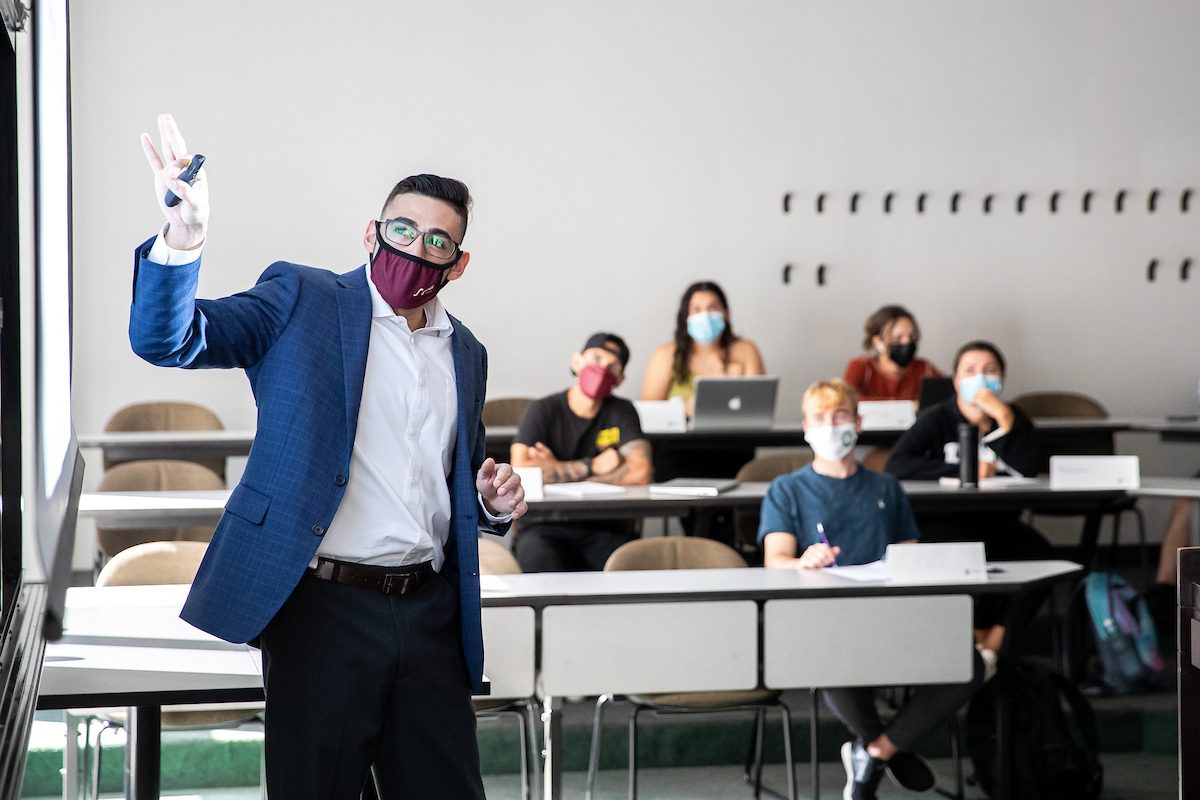
Robert Arias
Why do people buy the things they buy when the options are seemingly endless? The psychology of consumer behavior is the central concern of Robert Arias, an assistant professor of marketing at Loyola University Chicago’s Quinlan School of Business. He’s especially curious how individuals “consume to navigate their community context.”
His research has taken him inside the United Center, where the lifelong basketball fan studied the emotional and periodically illogical relationship between an iconic sports franchise (the Chicago Bulls) and its diehard supporters. It’s also taken him to a refugee camp in Uganda, where he conducted interviews with people fleeing war about navigating a foreign and temporary marketplace. Many were experiencing deprivation relative to their old lives; clean water and stable shelter was not guaranteed. On top of that, they were forced to contend with predatory sellers, or what Arias describes as “marketplace exclusion.” The trip “was eye-opening, of course,” he adds. “But it’s fun to see how similar we all are. People are playing soccer or playing with the little kids. Everybody wants the same things for their family—they want to enjoy their lives.”
At Loyola, Arias is starting to study a concept he’s termed “protective consumption.” He’s fascinated by purchases people make to safeguard themselves and their belongings, especially if they live and work in communities they find untrustworthy. Getting a snarling dog or a firearm qualifies. But more subtle patterns can emerge, like what people feel comfortable taking onto the CTA. In Uganda, Arias met a man who would leave his radio on while he slept in an attempt to convince would-be intruders that he was awake. And as a kid, Arias couldn’t help but notice that households on Chicago’s far South Side, where he was raised, were more likely to keep their curtains drawn than folks on the more affluent North Side. How those motivations play out is something his field has generally overlooked.
Arias fell backwards into marketing; as an undergrad at DePaul University, he sought out a major that might lead to a lucrative career down the road. (Finance and accounting didn’t take.) His parents were entrepreneurial, owning a handful of rental properties. And he’s always found the degree to which people are drawn to specific brands interesting. What really motivates a sneakerhead to stand in line for the latest Jordans?
Quinlan’s marketing group was a natural fit for Arias—his new colleagues are prolific and study topics through a social justice lens. After a few years teaching at John Carroll University in Cleveland, he’s hit the ground running back in his hometown. A Bulls game is only a bus ride away.
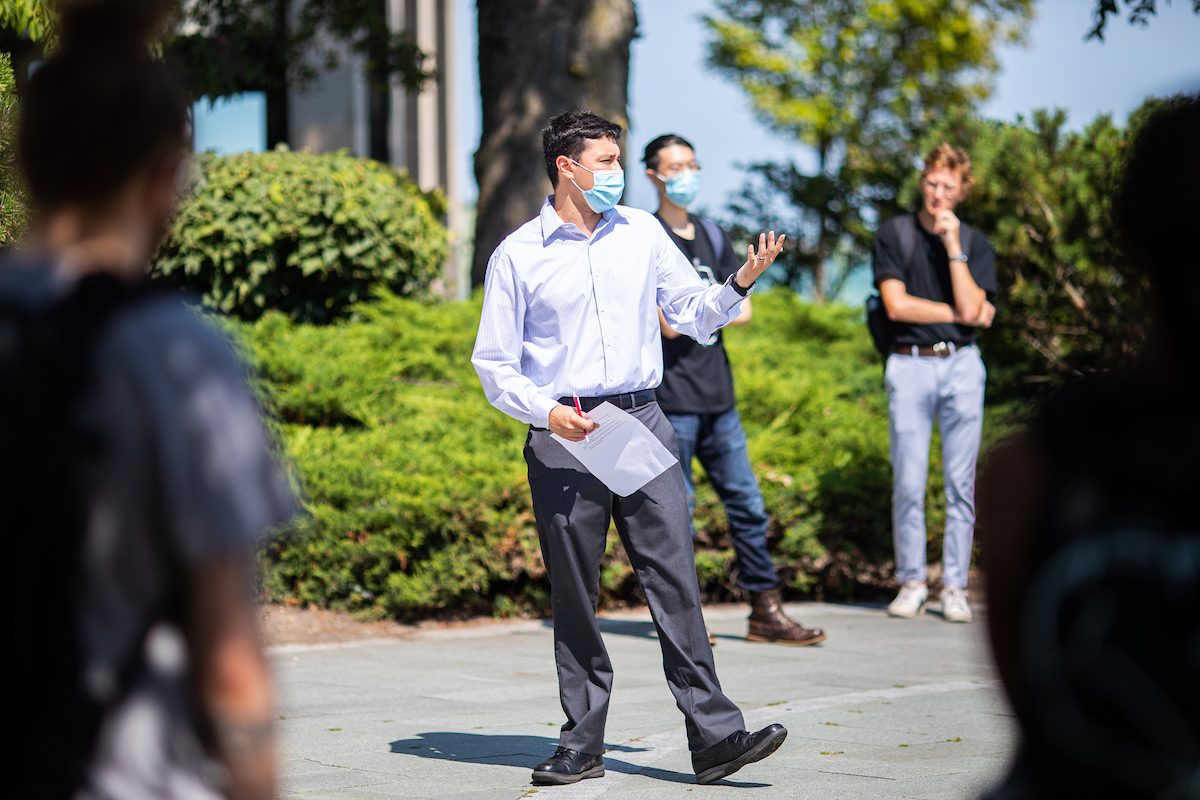
Christopher Hernandez
Plenty of little boys want to grow up to be Indiana Jones, for all the obvious reasons: the intellect, the adventure, the fedora. Christopher Hernandez, an assistant professor of anthropology at Loyola University Chicago, got pretty close. He’s an anthropological archaeologist by training (and currently Loyola’s only archaeologist), who studies the ancient Maya and their Indigenous descendants in Mexico and Guatemala. Digging in adverse conditions is a major part of the gig. “It’s out in the middle of the jungle, you’re covered with mosquitoes, you’re sweating, there’s scorpions and all sorts of things, and you’re just roaming through,” he says. While he’s never been swarmed by tarantulas, they have unknowingly landed on his chest.
Hernandez was raised in Rogers Park, just a few blocks north of the Lake Shore Campus, to a pair of Guatemalan immigrants. Steeped in his parents’ native customs at home, as a child he often felt like a foreigner in his own city, which sparked an interest in cultural exchange. “When I went to school or other places, I had to figure out what was going on there, how things are different, how people talk and act and eat differently,” he remembers. “A simple concept like a teddy bear, when I was in preschool I didn’t know what that was. What’s the name of your teddy bear? We don’t have bears in my house!”
A trip with his family to Tikal, an ancient Mayan citadel in the rainforests of northern Guatemala, sealed his academic fate. He was 11 or 12, scurrying up the temple stairs, completely carried away. The relationship that Guatemalans have with the Maya is a deep and complicated one. Hernandez wanted to understand it, in all of its complexity.
As an undergrad at the University of Illinois Chicago, he studied Maya hieroglyphic writing, excavation techniques, and ancient history. His research now primarily investigates how warfare shaped regional landscapes. (He just published in the journal Ancient Mesoamerica, writing on Mayan warfare tactics.) And in anthropology classes like “Ancient Worlds” or “Principles of Archaeology,” Hernandez tries to bring a fresh perspective on what archaeology is and can be. It’s not only a treasure hunt or a survey of the “exotic.” Archaeology, done thoughtfully, can address pressing contemporary social issues—inequality, decolonization, anti-racism, the repatriation of stolen artifacts or land. “A lot of people think of archaeology as the past, with no relevance to us,” he says. “It can have a broader mission.”
Some of Hernandez’ most meaningful fieldwork experiences actually took place inside people’s homes. He’d long heard primitive stereotypes, for instance, of the Lacandón people, who live in the jungles of Chiapas, the southern Mexican state. People there upended those stereotypes almost immediately. He loved sharing stories about mundane topics, like marriage and work. He was somewhere totally new but felt strangely comfortable.
“I can work with local communities and actually learn the culture while I’m digging up remains of their ancestors,” he says. “And then we can talk about what all this stuff means, and what it means to them.”
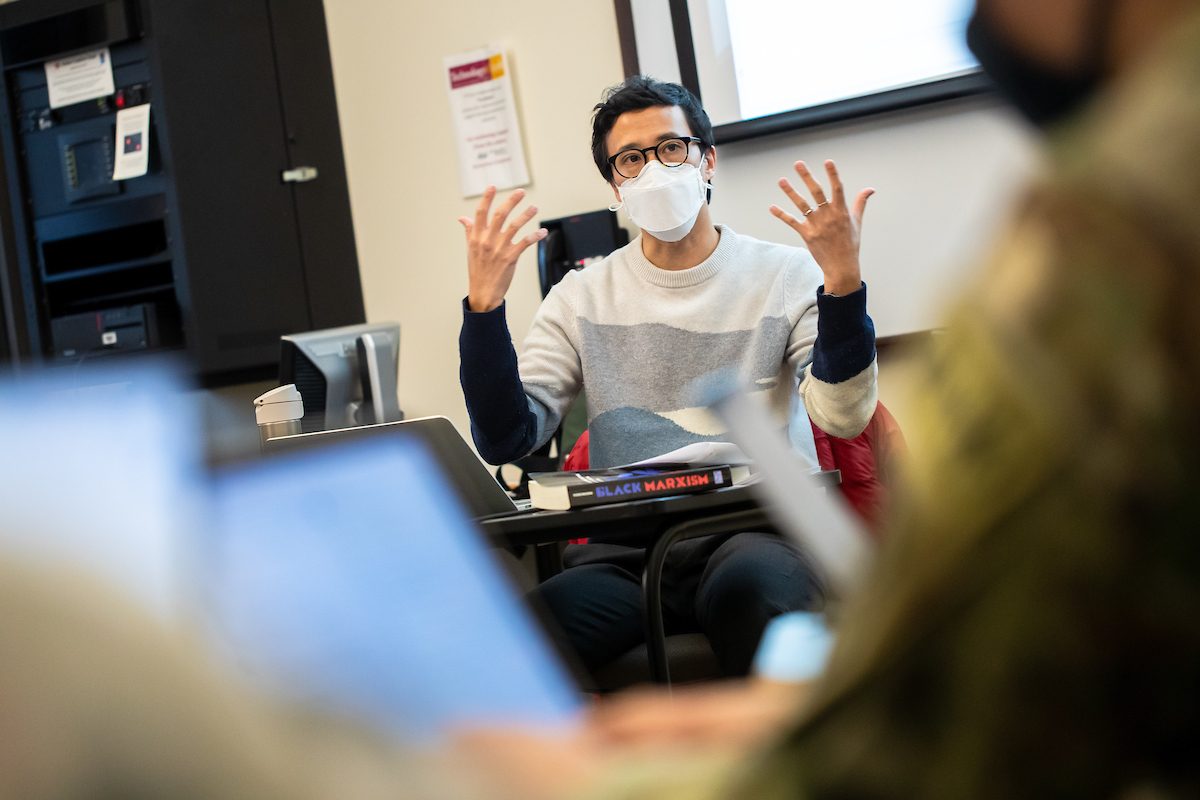
Long Le-Khac
Long Le-Khac, an assistant professor of English at Loyola University Chicago, always thought his father, a research chemist, had a sweet job. He dealt often with polyurethane, figuring out methods for making foams. It was heady stuff—beakers and lab coats and all the rest. When Le-Khac enrolled at Harvard University as an undergrad, he intended to follow in his dad’s scientific footsteps. Those plans changed quickly. “I found the teaching to be so lackluster,” he says. “Sitting in rooms of hundreds of people having someone read PowerPoint slides was not how I wanted to spend my college career.”
He found solace in an English seminar his sophomore year, surrounded by 10 students and one engaged professor. They read beautiful sentences, batted around ideas, and challenged each other. “The pedagogy sucked me in at first,” Le-Khac says, “and then the subject matter really took me.”
At the time, Harvard’s English curriculum was fairly traditional. Le-Khac appreciated this exposure to the Western canon, and especially the eccentricities buried within it. (Some Medieval work, it turns out, can be “totally weird and awesome.”) But as he moved into graduate school, his focus shifted towards post-colonial and U.S. ethnic literature. This was storytelling that grappled explicitly with politics and race, some of the most profound and thorny questions of the human experience. Novels have what Le-Khac calls “the capacity to confront and embrace” complexity and ambiguity. And they’re never detached from the world in which they are created—that’s what makes them so emotionally potent.
Le-Khac specializes in post-World War II American literature, specifically the work of Asian American and Latinx writers. His versatility—the ability to connect isolated traditions and investigate how they’re in dialogue—was appealing to Loyola’s hiring committee. A rapidly diversifying student body, meanwhile, is eager to incorporate this type of material into their literary diet. Le-Khac is among a handful of English professors leading a reconsideration of the curriculum for the English undergraduate major, which only requires students to take one course (out of 12) touching on the literatures of non-white people. The question the department is in the process of solving for? How can Loyola structure a degree so that non-traditional books are not what Le-Khac calls “a token interest, that they’re more woven into our central intellectual inquiries.”
Recently, Le-Khac has relished teaching Karen Tei Yamashita’s I Hotel, which was published in 2010. Kirkus describes the work as an “an overstuffed, multiform swirl of a novel about a decade in the life of San Francisco’s Chinatown and, by extension, the Asian experience in America.” From Le-Khac’s vantage point, the linked novellas “open up this whole world and this whole movement” for his students, who typically enter his classes without deep exposure to Asian American politics or history. The writing is wildly experimental and, according to Le-Khac, “super funny.” At the very least, reading I Hotel beats a boring chemistry lecture.
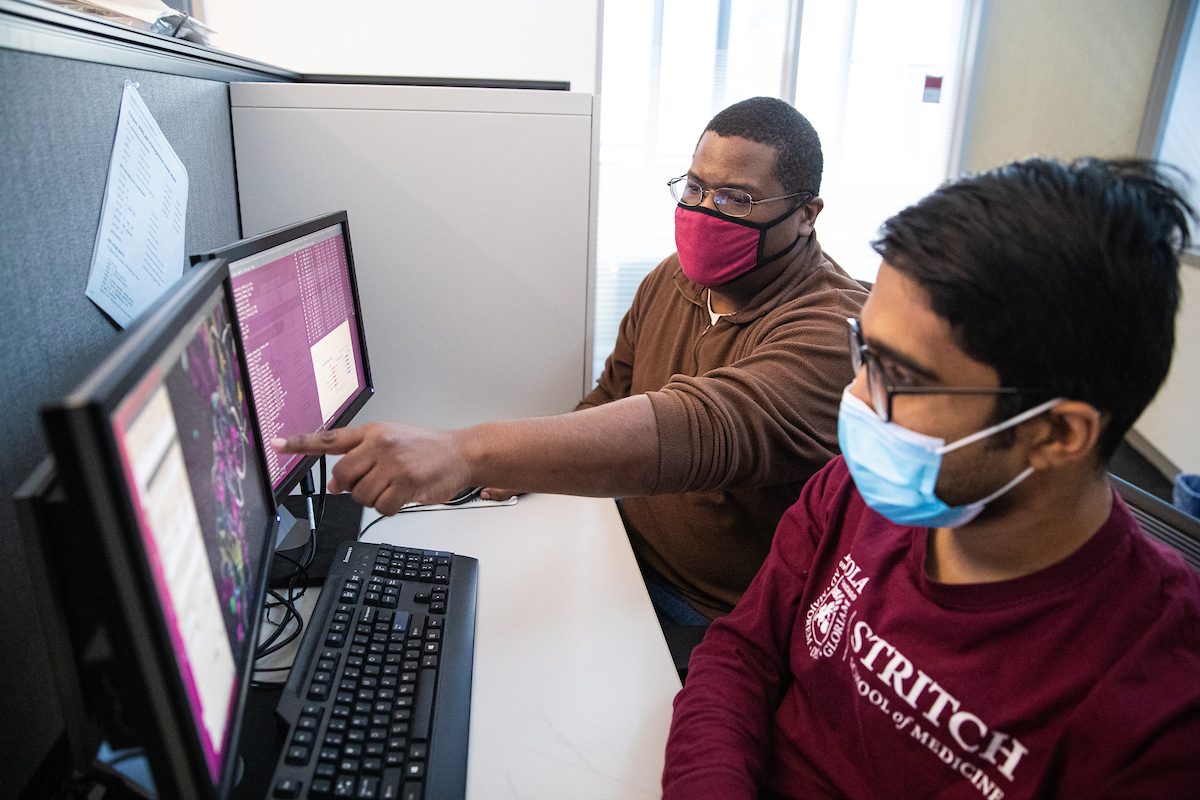
Whelton Miller
When Whelton Miller took a job at a Delaware pharmacy as a high school student, he didn’t know he’d work there through college, or that it would alter the trajectory of his life. It was a job for a teenager, like any other. Might as well have been at a day care or a movie theater.
There was something about mixing and matching medicine, though, that just clicked. Miller didn’t feel a strong desire to interact with customers; in the back, adorned in his white coat, he could help them all the same. The chemistry could cure.
Medicine doesn’t just fall from the sky. It must be dreamt up, designed, and intensely tested. Miller, now an assistant professor of bioinformatics at Loyola University Chicago’s Stritch School of Medicine, is consumed by the process of drug discovery. It’s what pushed him to study biochemistry as an undergrad at the University of Delaware and into a job at the pharmaceutical company AstraZeneca after graduation. From there, he pivoted towards graduate school and computational chemistry—the biomedical modeling of theoretical drugs.
Computational research is a critical component of contemporary science, cutting down on time-consuming and costly dead-ends by pushing investigators in directions that appear potentially fruitful, based on complex modeling. It’s especially valuable in the hunt for exploratory therapies that could address neglected diseases and cancers. Miller equates it to theoretical physics—Einstein wrote the theory of relativity before another physicist took it for a spin in the real world, making sure Einstein wasn’t a quack. Computational chemistry “is in the realm of ideas,” Miller says. “Things pop in my mind, even when I’m watching TV or something—Oh, that might work! Let me try that out!”
As a postdoc at the University of Pennsylvania, Miller was given the opportunity to teach at Lincoln University, an historically Black university 45 minutes outside Philadelphia. He stayed on, full-time, for four years. Resources were tight; Miller actually built his own computers. And he learned to balance an intense teaching load—12 to 15 credits per semester—with his own cutting-edge research. The experience sparked in Miller a passion for teaching and mentorship, especially among underprivileged students without a clear path into medicine. Miller is a Black chemist, still a rarity in the field. He paid his dues and has a compelling story to share.
To that end, Miller will focus on building out his research at Loyola while also pursuing a partnership with the burgeoning Institute for Racial Justice, where he hopes to develop a more formal internship program. (He’s also joined Loyola’s Brothers for Excellence chapter as a mentor.) When time allows, he has ambitions to teach a computer-aided drug design course. And while still relatively new to Loyola, he hasn’t taken for granted the University’s financial and intellectual resources, even for a second. “Loyola,” he says, “looks like a gold mine to me.”
